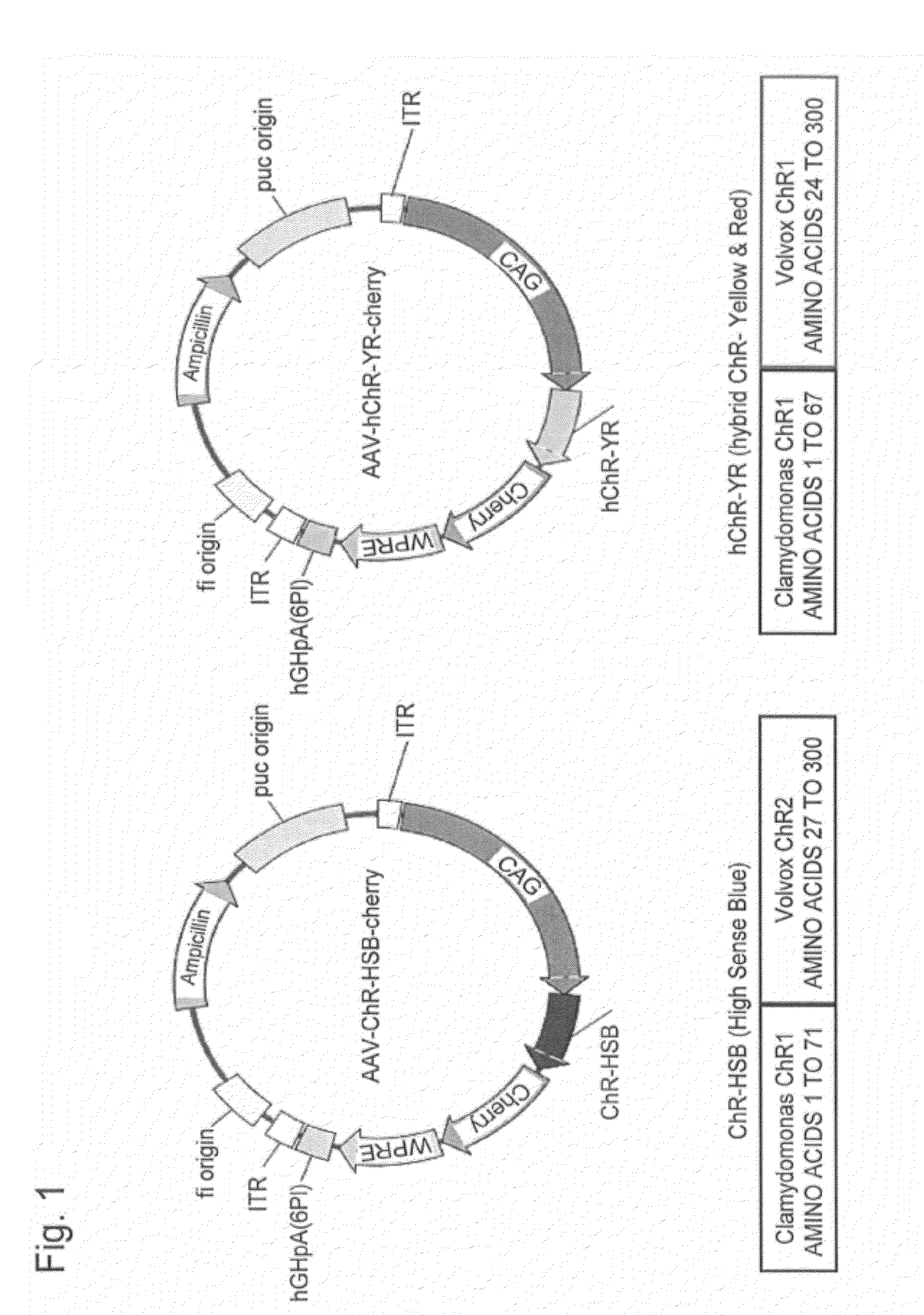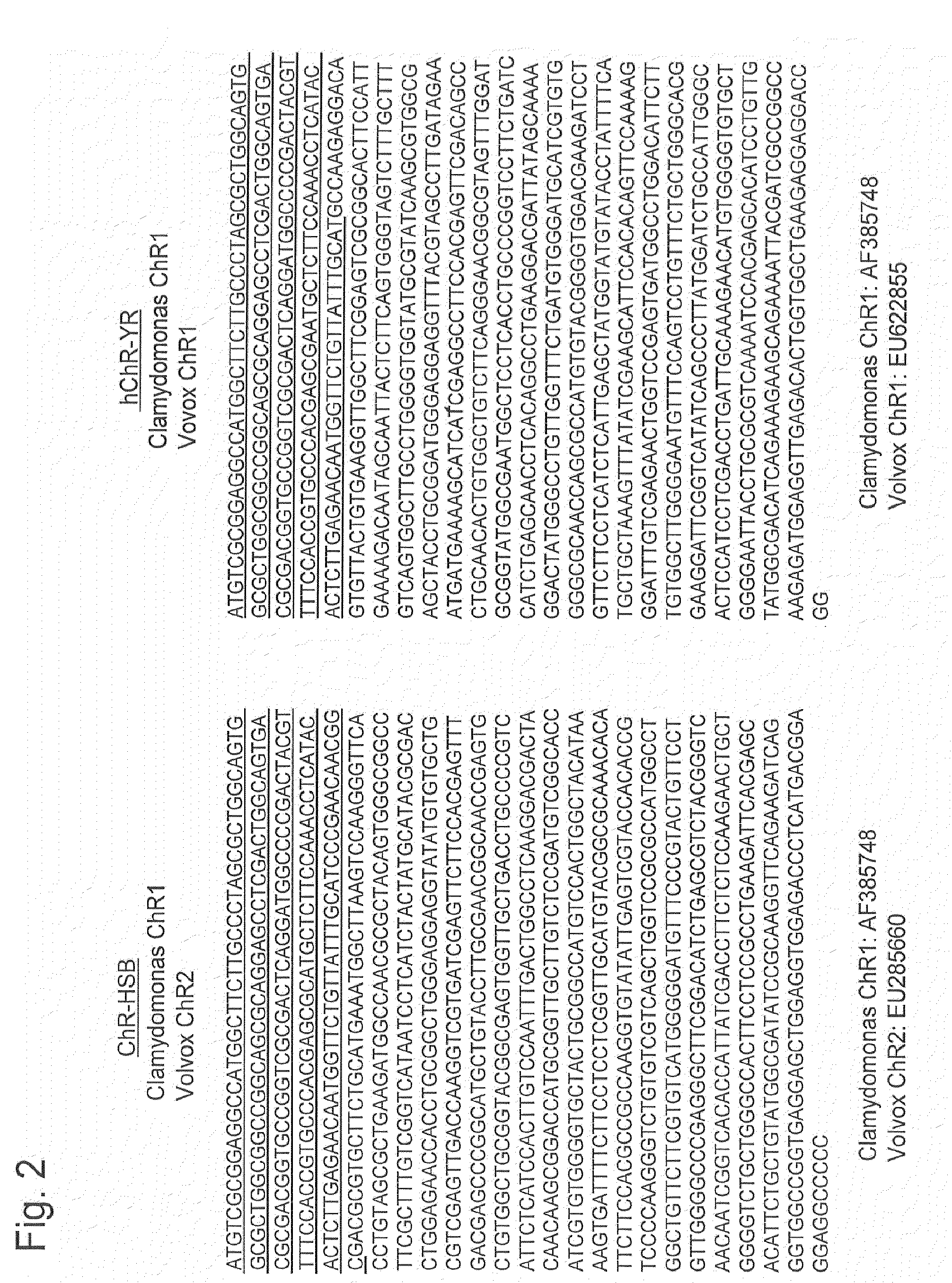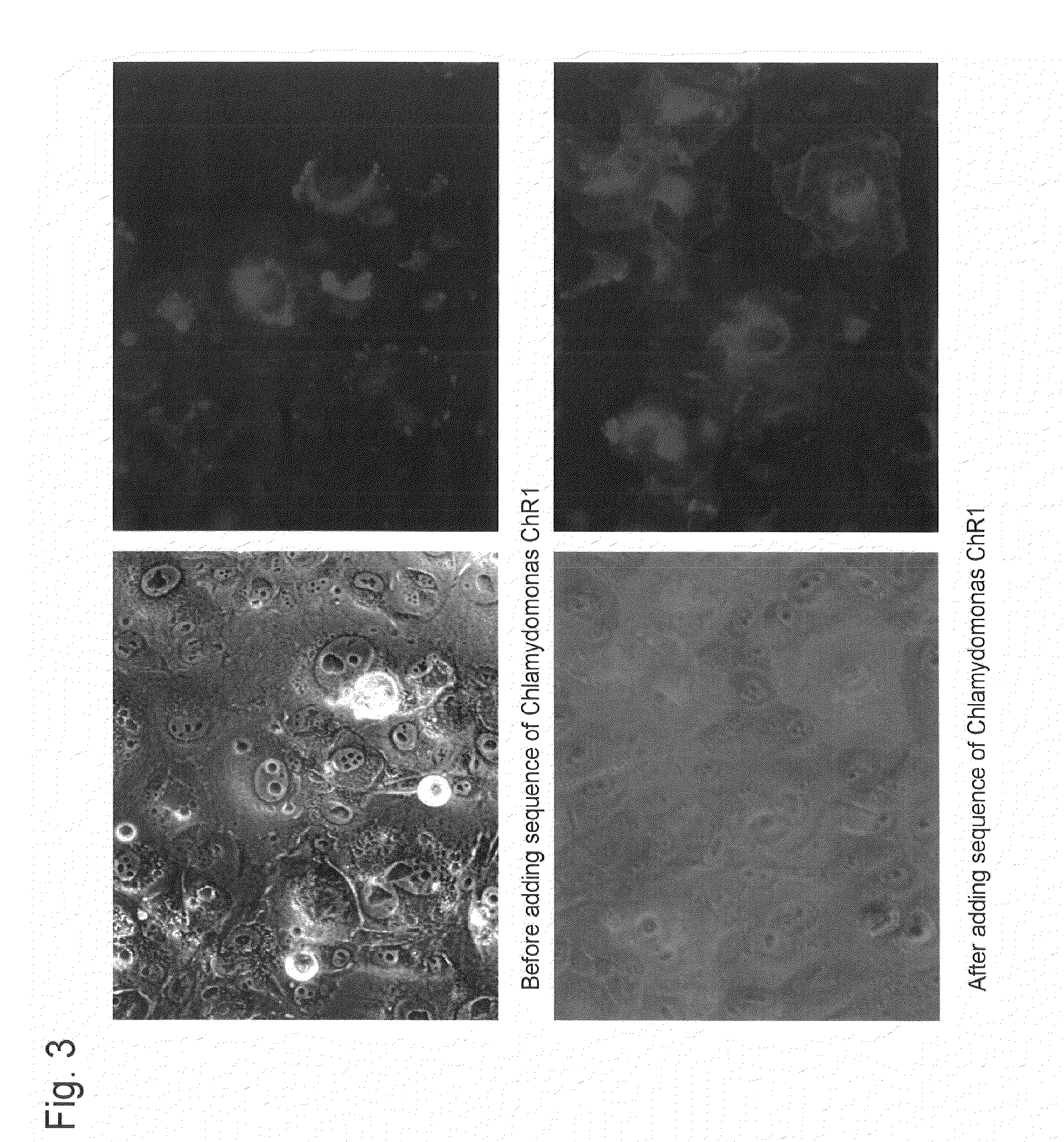Light-receiving channel rhodopsin having improved expression efficiency
a technology of light-receiving channel and rhodopsin, which is applied in the direction of cardiovascular disorders, peptides, drug compositions, etc., can solve the problems of single gene not being able to impart the ability to receive light, loss of vision, and blue color, etc., and achieve the effect of improving expression efficiency
- Summary
- Abstract
- Description
- Claims
- Application Information
AI Technical Summary
Benefits of technology
Problems solved by technology
Method used
Image
Examples
example
Construction of ChR-HSB and hChR-YR
ChR-HSB
[0104]The region of nucleotides 98 to 309 of Chlamydomonas-derived channel rhodopsin 1 (ChR1; Gene Bank #AF385748) and the region of nucleotides 123 to 945 of Volvox-derived channel rhodopsin 2 (volChR2; EU285660) were amplified by a PCR method and inserted into a multicloning site of a plasmid for preparing an adeno-associated virus vector. The plasmid for preparing an adeno-associated virus vector has a fluorescent protein gene, pmCherry, positioned in the 3′ region of the multicloning site, and the target gene is expressed in the form of a fused protein having the fluorescent protein pmCherry at the C-terminal region (FIG. 1 left; AAV-ChR-HSB-Cherry).
hChR-YR
[0105]The region of nucleotides 98 to 297 (C at position 244 was substituted with A) of Chlamydomonas-derived channel rhodopsin 1 (ChR1; Gene Bank #AF385748) and the region of nucleotides 72 to 903 of Volvox-derived channel rhodopsin 1 (volChR1;EU622855) were amplified by a PCR method ...
PUM
| Property | Measurement | Unit |
|---|---|---|
| Fraction | aaaaa | aaaaa |
| Efficiency | aaaaa | aaaaa |
| Fluorescence | aaaaa | aaaaa |
Abstract
Description
Claims
Application Information
 Login to View More
Login to View More - R&D
- Intellectual Property
- Life Sciences
- Materials
- Tech Scout
- Unparalleled Data Quality
- Higher Quality Content
- 60% Fewer Hallucinations
Browse by: Latest US Patents, China's latest patents, Technical Efficacy Thesaurus, Application Domain, Technology Topic, Popular Technical Reports.
© 2025 PatSnap. All rights reserved.Legal|Privacy policy|Modern Slavery Act Transparency Statement|Sitemap|About US| Contact US: help@patsnap.com



